With over 40 years of continuous data collection across many biomes, the Long Term Ecological Research (LTER) Network is a rich source of information for testing big-picture concepts about how ecosystems work. Luckily, the Network also brings together a group of scientists with creative ideas about how to wring new insights from diverse data sources.
The LTER synthesis working group process is designed to capitalize on the experiments, contextual knowledge, data, and creativity of the LTER Network. By funding small groups of scientists from inside and outside the Network to work intensely together on a synthesis project, the process encourages the ecological community to use existing data to probe novel theories, test generality, and search for gaps in our understanding.
The active Synthesis Working Groups are listed below.
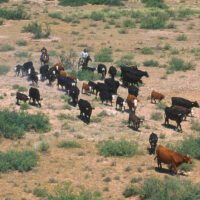
Principal Investigator: David Hoover, Olivia Hajek
Award Date: August 20, 2024
Description:
Assessing the resilience of productivity to climate variability across management and climate gradients
The patterns and drivers of primary production are the foundation of ecosystems and food webs worldwide, and the products of primary production drive global carbon cycling and provide food and other key resources to people. Few studies that compare the patterns and drivers of primary production across multiple ecosystems, however, focus on managed ecosystems (e.g., rangelands, croplands), even though managed ecosystems are the predominant type across the globe. This synthesis group supplements natural ecosystem data from the LTER with data from two other prominent research networks—the Nutrient Network (NutNet) and the Long-Term Agricultural Research Network (LTAR)—to examine how management status and climate affect the resilience of primary production. The diverse working group has expertise in resilience theory, climate change, ecosystem ecology, and sustainable agriculture, spanning a variety of career stages and institutions. Results from this effort are important for land use decisions and global carbon cycle modeling.
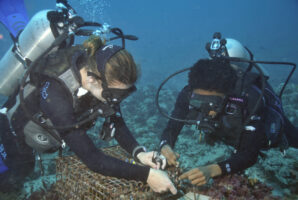
Principal Investigator: Jamie McDevitt-Irwin, Kelly Speare, Sally Koerner
Award Date: August 21, 2024
Description:
Consumer Absence Generates Ecological Dissimilarity (CAGED): A cross-ecosystem synthesis exploring the consequences of consumer loss on community variability
Consumers are disappearing from ecosystems across the globe, the effects of which influence how the remaining community looks and functions. Recent case studies suggest that consumer loss leads to increased community variability across space. However, it remains unknown if this is a general pattern shared across ecosystems, regions, and taxa. This working group will capitalize on existing data from consumer-exclusion experiments that are common in aquatic and terrestrial ecosystems to evaluate how consumer loss influences community variability across space (i.e., dissimilarity in community composition). The project will combine seventy-five exclusion experiment datasets from studies at LTERs, the Grazing Exclosure Database, and other ecosystems (e.g., aquatic, forests). Understanding how consumer loss affects community variability is integral to conservation and management and predicting how an ecosystem will provide services and respond to global change.
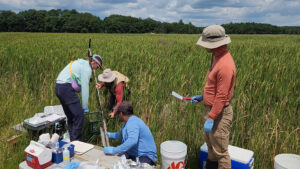
Principal Investigator: Ashley Bulseco, Smriti Pehim Limbu, Abigail Borgmeier, L. McKinley Nevins, Francis Andrea Chaves Rodriguez
Award Date: June 10, 2025
Description:
Credit: Zoe Cardon. CC BY-SA 4.0. Interconnectedness between plant and microbial communities is likely a key indicator of ecosystem functioning and stability. These associations could be assessed through synchrony, the degree of similarity in temporal fluctuations between different ecosystem components, and coupling, which is the pairwise association of components in the ecosystem. However, few studies...
Read more »
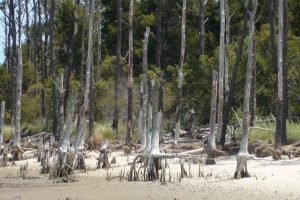
Principal Investigator: Kai Kopecky, Katherine Suding, Ty Tuff
Award Date: June 10, 2025
Description:
While there is widespread appreciation that abiotic/climate legacies strongly influence community assembly and ecosystem resilience, there is emerging evidence that another type of legacy—structural and resource remnants left by organisms—may exert as strong or stronger effects. The remnants of foundation species (e.g., dead trees, corals, oysters, and grasses) are likely highly influential, as these abundant...
Read more »
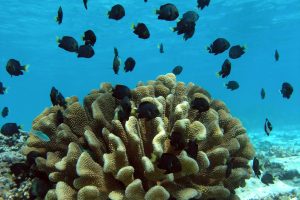
Principal Investigator: Shalanda Grier, Lauren Enright, Camille Magneville, Mackenzie White
Award Date: June 10, 2025
Description:
Recent advances in trait-based frameworks, that utilize universal functional traits to examine functional diversity, provide a critical opportunity to better understand patterns in diversity across taxa with diverse phylogenetic lineages, especially in response to global change. While ecologists have had much success using universal traits for plants with diverse origins, methodologies in consumer studies are...
Read more »







